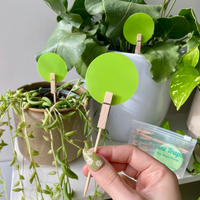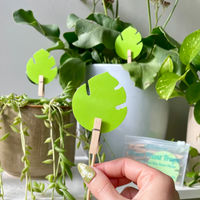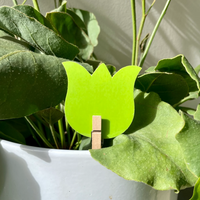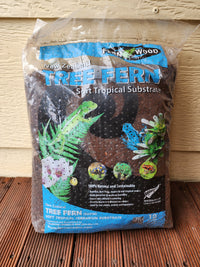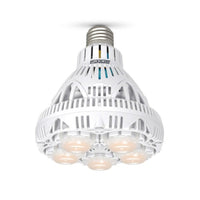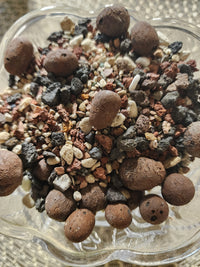Struggling to maintain consistent hydration for your epiphytic orchids? Discover how Leaf of Faith’s Orchid Fern Fibre Substrate Australia delivers natural moisture balance, superior aeration and root health in every pot. In this guide, you will learn what tree fern fibre is and where it comes from, how it prevents root rot, best potting and watering practices, comparisons with other substrates, and even versatile uses for aroids and hoyas. By the end, you’ll see why our Tree Fern Fibre 10L by SPS stands out as Australia’s go-to orchid growing medium.
What is Tree Fern Fibre and Why is it Ideal for Orchids?
What is Tree Fern Fibre Made Of and Where Does It Originate?
Tree fern fibre consists of fibrous strands from dead fronds of tree ferns, sustainably harvested in New Zealand and parts of eastern Australia. Its neutral pH and coarse texture mirror the natural canopy litter where epiphytes thrive, ensuring orchids experience conditions close to their rainforest habitat. This botanical origin sets the stage for optimal moisture retention and gas exchange in container culture.
How Does Tree Fern Fibre Support Orchid Moisture Balance?
Tree fern fibre balances moisture through capillary action and pore architecture that retains water while allowing excess to drain away. Its porous interwoven strands absorb rain-like moisture and release it slowly to orchid roots, preventing both drought stress and waterlogging. This dual mechanism underpins the substrate’s reputation for stable humidity around delicate roots.
What Are the Key Benefits of Using Fern Fibre for Orchid Health?
Below is a concise list of the most impactful advantages of Leaf of Faith’s fern fibre, tuned to orchid physiology:
- Superior aeration for fine root oxygenation.
- Efficient drainage to eliminate stagnant pockets.
- Consistent moisture retention without compaction.
- Natural pH neutrality (around 5.5–6.5) is ideal for epiphytes.
- Durable structure that lasts multiple growing cycles.
These attributes combine to promote vigorous root systems and abundant flowering, leading naturally into how root rot is prevented.
How Does Leaf of Faith’s Fern Fibre Substrate Prevent Orchid Root Rot?

What Causes Root Rot in Orchids and How Can Substrate Help?
Root rot in orchid stems from prolonged saturation, poor oxygen diffusion and anaerobic conditions around roots. By replacing dense media with tree fern fibre, water drains rapidly and air pockets persist, cutting off the pathogen-friendly environment that fosters rot. Healthy roots then flourish in the improved microclimate.
How Does Fern Fibre Enhance Aeration and Drainage to Protect Roots?
Leaf of Faith’s fern fibre features large interstitial spaces that channel excess water away and trap air for root respiration. This structural network supports gas exchange, keeping roots turgid and disease-free. Enhanced drainage and aeration work together to uphold moisture balance and deter root-threatening fungi.
What Signs Indicate Root Rot and How to Address Them with Fern Fibre?
Early indicators of root rot include brown, mushy roots and yellowing leaves. To remedy this, gently remove affected roots, repot into fresh fern fibre and adjust watering frequency. Observing lively white feeder roots re-emerging confirms recovery and reinforces the substrate’s protective role.
How to Use Leaf of Faith’s Fern Fibre Substrate for Optimal Orchid Care?

What Are the Best Practices for Potting Orchids with Fern Fibre?
Repot orchids by filling a clean pot with a base layer of fern fibre, positioning the plant’s root mass centrally, and backfilling until roots are snug but not compressed. Ensure the crown sits above the substrate to prevent moisture accumulation. Tapered pots with ample drainage holes further enhance airflow and support stable hydration in the fibre matrix.
How Should You Water Orchids to Maintain Moisture Balance in Fern Fibre?
Water orchids when the top third of the fern fibre feels just dry to the touch, typically every 5–10 days, depending on ambient humidity. Apply water evenly until it drains freely, then allow the substrate to air out. This routine sustains a rhythmic wet-dry cycle that mirrors rainforest conditions without over-saturating roots.
Which Fertilisers Work Best with Fern Fibre Substrate for Orchids?
Because tree fern fibre is low in organic nutrients, use balanced liquid fertilisers (e.g., 20-20-20 NPK) at half-strength every two to three waterings. Slow-release orchid pellets or organic seaweed blends also integrate seamlessly into the fibre and deliver sustained nourishment. These approaches optimise nutrient uptake without disrupting moisture dynamics.
How Does Fern Fibre Compare to Other Orchid Substrates in Australia?
What Are the Differences Between Fern Fibre and Orchid Bark?
Below is a comparative table highlighting core distinctions between tree fern fibre and traditional Pinus radiata orchid bark:
| Entity | Attribute | Fern Fibre | Orchid Bark |
|---|---|---|---|
| Drainage Rate | Rate | Rapid, non-compacting | Good, but can retain pockets |
| Aeration Oxygen flow | Level | High, sustained | Moderate, may compact over time |
| Moisture retention | Capacity | Balanced capillary hold | Lower, dries quickly |
| Longevity | Media lifespan | A good few years | A year or two |
| pH stability | Range | Neutral (5.5–6.5) | Slightly acidic |
This table shows why fern fibre excels in delivering both aeration and moisture control, leading to drier conditions that protect roots.
How Does Fern Fibre Compare to Sphagnum Moss and Coir?
The following comparison clarifies substrate properties relevant to epiphytic orchids:
| Entity | Attribute | Sphagnum Moss | Coconut Coir | Fern Fibre |
|---|---|---|---|---|
| Water retention | Moisture capacity | Very high (can waterlog) | High (slow draining) | Moderate (balanced release) |
| Aeration | Air space | Low without additives | Moderate; compacts over time | High, stable structure |
| pH level | Acidity | Acidic (4.5–5.5) | Neutral to slightly acidic | Neutral (5.5–6.5) |
| Durability | Breakdown rate | Less than a year | A year or two | A good few years |
Fern fibre’s equilibrium between drainage and retention makes it particularly well-suited for lasting orchid culture.
Why Choose Sustainable Fern Fibre Over Other Growing Media?
Sustainable tree fern fibre is harvested from managed plantations, ensuring minimal ecosystem disruption. Its long lifespan reduces waste and repotting frequency, while its natural composition avoids synthetic additives. These environmental advantages align with eco-friendly gardening practices and deliver consistent performance.
Can Leaf of Faith’s Fern Fibre Substrate Support Other Plants Like Hoyas and Aroids?
What Benefits Does Fern Fibre Offer for Aroids and Hoyas?
Epiphytic aroids and hoyas benefit from the same aeration and moisture dynamics that support orchids. Fern fibre prevents root compaction, encourages robust root branching and maintains humidity around aerial roots—boosting overall plant vigour and leaf turgor. These shared traits enable smooth transitions between orchid and aroid cultivation.
How Can Fern Fibre Be Used in Moss Poles, Terrariums, and Vivariums?
Tree fern fibre is ideal for lining moss poles, providing a stable anchor for climbing roots and absorbing ambient moisture. In terrariums and vivariums, its inert structure promotes drainage beneath substrate layers and supports captive epiphytes without mould issues. Versatile by design, it enriches diverse indoor and greenhouse environments.
Transitioning to this comprehensive substrate unlocks healthier roots and lush growth across orchids, aroids and beyond; explore our Tree Fern Fibre 10L or browse all options at Leaf of Faith SA to bring reliable moisture balance to your plants.


